Each time you visit a supermarket, you’re met with an overwhelming variety of cheeses—over 1,800 distinct types are produced globally, according to the International Dairy Federation.
Did you know that every cheese has a unique origin story and often centuries of tradition behind it, shaping its texture, aroma, and flavor?
From the alpine caves of Switzerland to the sunlit pastures of Italy, cheese-making is a time-honored craft practiced in more than 120 countries.
You might have built a charcuterie board with mozzarella, a creamy wheel of Brie or Camembert, or tossed fresh ricotta into your salad. But that’s just the beginning.
The world of cheese is vast, and the pairing possibilities are endless. In fact, global cheese consumption has grown by 17% over the past decade, reflecting a rising appetite for everything from everyday slices to gourmet indulgences (source).
Whether paired with honey, olives, or a bold Merlot, every combination offers a new layer of taste.
Ever wondered why some types of cheese are creamy while others crumble? It all depends on factors like the milk used (cow, goat, or sheep), the terroir, and the curdling process.
Ready to explore hard-aged classics and soft, melt-in-your-mouth varieties? Let’s dive into 30 types of cheese and their uses!
Fresh Cheeses *(unaged, soft, high moisture)
1. Cottage Cheese
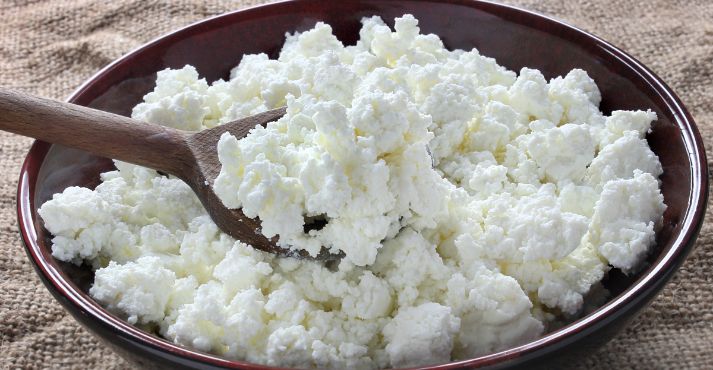
Cottage cheese is a fresh cheese that’s popular for its mild flavor, creamy texture, and versatility in a wide range of dishes. It is made by curdling milk, typically cow’s milk, with an acid, like lemon juice or vinegar.
The curds that form during this process are then drained of whey, resulting in the lumpy, curd-like appearance that gives cottage cheese its name.
This cheese is highly nutritious, rich in protein and low in fat, making it a favorite among health-conscious individuals. It’s an excellent source of essential nutrients like calcium, selenium, and vitamin B12.
Cottage cheese can be enjoyed in various ways. It’s commonly eaten plain, as a high-protein snack or breakfast item, often topped with fruits, honey, or savory seasonings. It also makes for a great addition to salads, providing a creamy contrast to fresh greens.
Cottage cheese can be used in both sweet and savory recipes, from lasagnas to cheesecakes, adding a creamy and slightly tangy quality to dishes. Its versatility and health benefits make it a staple in many households.
2. Chhena
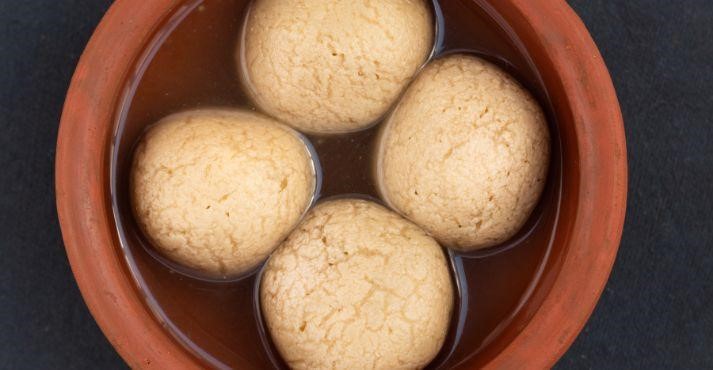
Chhena is a cheese made from cow or buffalo milk in India. It is commonly used in sweets and desserts. It has a soft, crumbly texture and is typically prepared by curdling milk with lemon juice or vinegar and draining the whey.
This process results in a fresh cheese that is rich in moisture and pliable, allowing it to be molded into various shapes.
Chhena is a critical ingredient in many traditional Indian sweets, such as rasgulla, ras malai, and Sandesh. Its mild flavor and creamy texture make it ideal for absorbing sweet syrups and aromatic spices.
Beyond desserts, chhena is also used in savory dishes like chhena poda and paneer-based curries. Its usefulness in sweet and savory recipes makes it a valuable component of Indian cuisine.
3. Cream Cheese

Cream cheese is a soft, spreadable cheese with a mild and slightly tangy flavor. It is made by adding cream to milk, resulting in a rich, smooth texture that makes it a favorite for spreading on bagels and toast.
Cream cheese is a popular ingredient in cheesecakes, where its creamy consistency and subtle tartness contribute to the dessert’s signature taste.
This resourceful Cheese is widely used in both sweet and savory dishes. It can be whipped into dips, mixed into frosting, or used as a filling for pastries. Its mild flavor allows it to complement a variety of ingredients, making it a popular choice for breakfast spreads and appetizers.
Cream cheese is often paired with smoked salmon, chives, or fruit preserves, creating various delicious combinations.
4. Paneer (Panir)
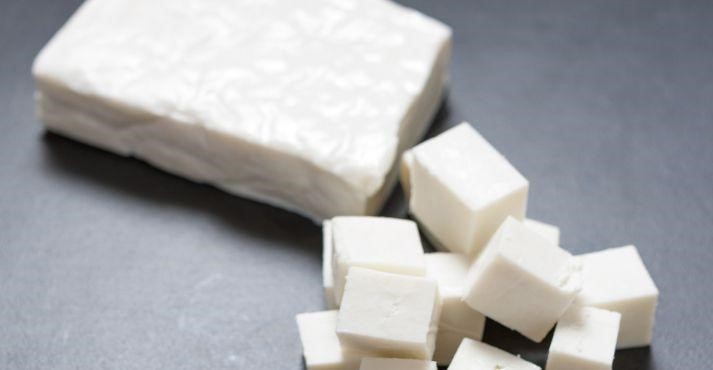
Paneer, also spelled Panir, is an Indian cheese made from cow or buffalo milk. It is known for its firm texture and mild flavor.
Paneer is a non-melting cheese created by curdling milk with an acid, such as lemon juice or vinegar, and pressing the curds to remove excess whey. The result is a valuable cheese that can be cut into cubes or slices for various dishes.
Paneer is a critical ingredient in many Indian recipes, particularly curries and stir-fries. Its firm texture allows it to hold its shape when cooked, making it an excellent choice for grilled dishes and skewers.
Paneer is popular among vegetarians as a meat substitute. It provides a source of protein and a satisfying texture. Its mild flavor absorbs spices and sauces, complementing various Indian and international cuisines.
5. Burrata
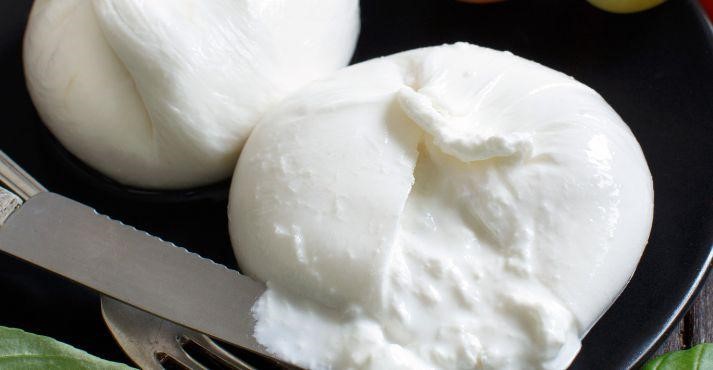
Burrata is an Italian cheese that blends mozzarella with cream, creating a soft and creamy interior.
Originating from the Apulia region in southern Italy, burrata is made by creating a thin outer layer of mozzarella and then filling it with a rich mixture of cream and stracciatella (shredded mozzarella). The result is a luxurious, velvety cheese that oozes when cut open.
Burrata has a delicate flavor with a hint of sweetness and a smooth texture. It’s often served as a standalone appetizer with ripe tomatoes, fresh basil, and a drizzle of olive oil, creating a simple yet elegant dish.
In addition to salads, burrata pairs well with crusty bread, prosciutto, or roasted vegetables, offering a touch of a treat to any meal.
6. Bocconcini

The next type of Cheese we will cover is Bocconcini. It is an Italian Cheese made from fresh mozzarella, typically shaped into small, bite-sized balls.
“Bocconcini” means “little bites,” reflecting the Cheese’s size and appeal. This Cheese has a creamy texture and a mild, slightly sweet flavor, making it a popular choice for salads, pizzas, and antipasto platters.
Bocconcini’s soft, tender texture and subtle taste pair well with various ingredients. It’s often included in Caprese salads alongside tomatoes and fresh basil, creating a light and refreshing dish.
Additionally, bocconcini is used in pizzas, offering a deliciously melty cheese experience, and can be served with olives, cured meats, or crusty bread for a delightful antipasto spread. Its adaptability and delightful texture make it a favorite in Italian cuisine and beyond.
7. Kesong Puti
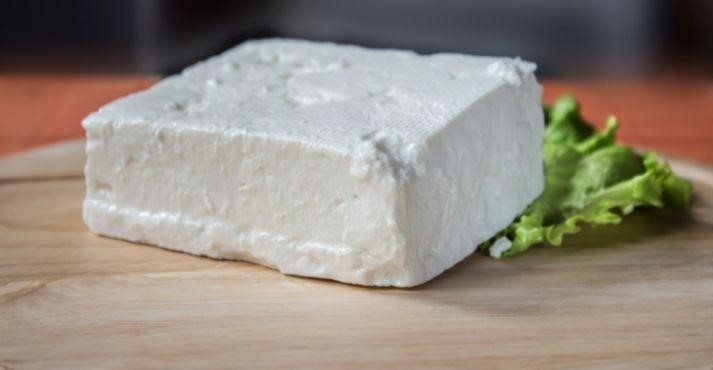
Kesong Puti is a Filipino cheese made from carabao (water buffalo) milk. It is known for its soft and creamy texture. This fresh Cheese has a mild, milky flavor and is typically unsalted, allowing it to pair well with sweet or savory dishes.
Kesong Puti is often sold in banana leaves or wrapped in plastic, highlighting its artisanal and homemade roots.
Kesong Puti is a popular ingredient in Filipino cuisine for traditional snacks and desserts. It is commonly used in ensaymada, a sweet bread topped with butter and sugar, or added to tarts for a creamy filling.
Kesong Puti is also a favored choice for sandwiches. Its delicate flavor makes it a beloved cheese in the Philippines. It provides a smooth and creamy layer that complements various spreads and fillings.
8. Sakura
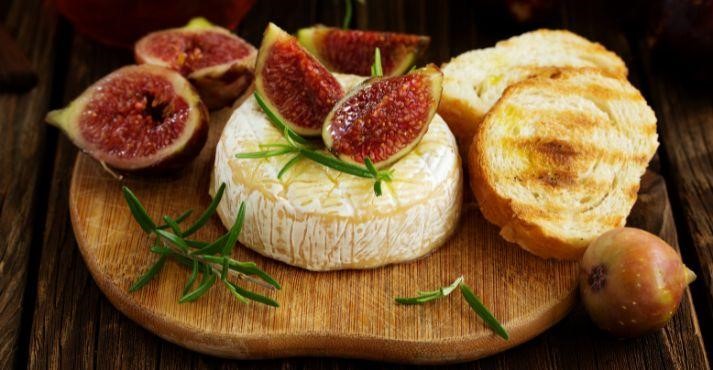
Sakura cheese is a Japanese cheese made from cow’s milk, known for its soft and creamy texture and delicate floral flavor.
The name “Sakura” means cherry blossom in Japanese, and this Cheese is often flavored with cherry blossom leaves, giving it a distinct aroma and a subtle floral taste. Sakura cheese is a specialty product celebrated for its unique character and presentation.
In Japanese cuisine, Sakura cheese is used in various dishes, including sushi and salads, where its delicate flavor complements other ingredients. It is also a popular dessert choice, adding a creamy texture and a hint of floral sweetness.
As a specialty cheese, Sakura is often served on cheese boards or enjoyed with Japanese teas. Its unique flavor profile and association with cherry blossoms make it a highly regarded cheese in Japan and among cheese connoisseurs.
9. Ragya Yak
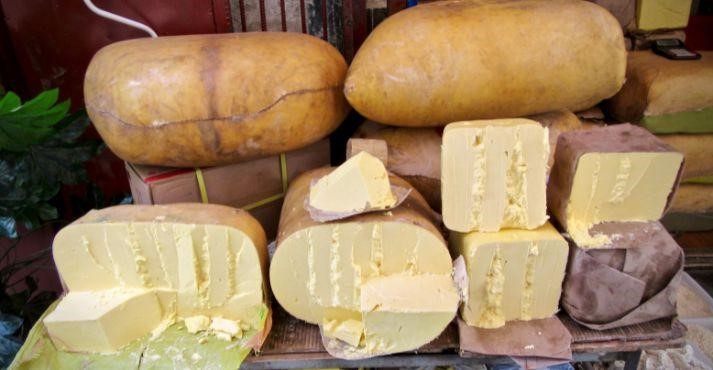
Ragya Yak cheese is a Tibetan cheese made from yak milk, offering a rich and creamy texture with a slightly smoky flavor. This unique Cheese is a staple in Tibetan cuisine, where yak milk is a common source of dairy.
The Cheese is typically made by curdling yak milk and pressing the curds, resulting in a dense and creamy product.
In Tibetan culture, Ragya Yak cheese is highly valued and is often used in traditional dishes and religious ceremonies. Its rich texture and smoky undertones make it a popular addition to soups and stews, where it adds depth and flavor.
Ragya Yak cheese is also consumed as a snack, providing energy and nutrition in the high-altitude regions of Tibet. Its cultural significance and unique taste make it an exciting cheese to explore.
10. Mozzarella Cheese
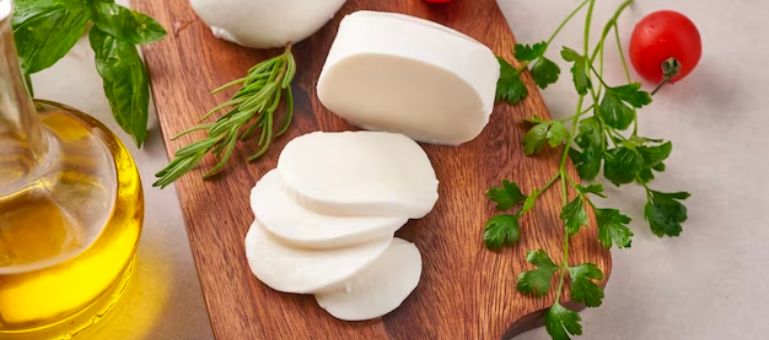
Like cheddar, mozzarella is another type of cheese universally known and typically found in every home.
Authentic mozzarella cheese from Italy is processed from cow or water buffalo milk with rennet added as a coagulant for the milk to curdle.
The curds undergo intense processes and are kept in whey and stretched out for the curds to rearrange. This process, called Pasta Filata, is responsible for mozzarella’s unique smooth texture. Keeping the cheese in brine gives it an acidic flavor.
Its milky and mild flavor has made it a traditional staple of Italy. This means you can enjoy it best with Italian dishes based on tomatoes and crusty bread. We know it best as a cheese that gives pizza the cheesy pull. We recommend you try it in salads and enjoy it fresh.
When melted, mozzarella is gooey and gives cheese strings because of its high water content. This makes it ideal for different pasta dishes and an excellent filling for lasagna.
Soft-Ripened Cheeses (aged from the outside in, creamy interiors)
11. Brie Cheese

Next up is the brie cheese from the category of soft cheeses. With its roots in Seine-et-Marne, this French cheese is a farmhouse cheese that owes its flavor to a carefully monitored process.
Brie is typically made from unpasteurized cow milk in France, leading to import bans on food importers in multiple countries. However, variations of this are available for export.
The original Brie is curdled, cut into rounded molds, and allowed to rest for upto four weeks. This allows a spongy natural rind to develop on its outer surface.
Brie is known as one of the creamiest cheeses. This texture and the off-white color are because of the high buttermilk percentage, which gives it a smooth and soft interior.
Bries wheels have a solid buttery and earthy taste. If left to age, it develops a sweet flavor. It is ideal for storing Brie at room temperature owing to its unique partly runny consistency.
Brie is widely used on cheeseboards. A more conventional take is enjoying Brie with fruits, baguettes, and nuts.
It is widely used in pastries because of its buttery profile. Around the world, people serve baked Brie wrapped in warm puff pastries and use brie chunks in casseroles.
12. Neufchatel Cheese
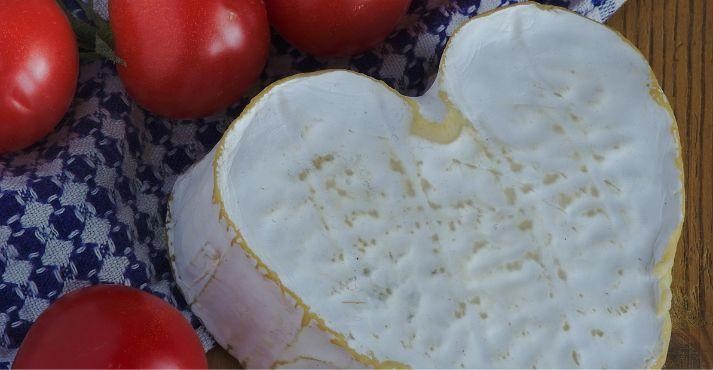
Neufchatel cheese is a soft, creamy cheese that resembles cream cheese but has a slightly tangier flavor.
Originating from the Normandy region in France, Neufchâtel has a rich history dating back to the Middle Ages. Its smooth and spreadable texture makes it a popular choice for cheesecakes, dips, and spreads.
This Cheese has a slightly grainy consistency compared to cream cheese, and its tangy undertone adds a unique twist to various dishes. In French cuisine, Neufchâtel is often used in desserts and as a base for savory spreads.
Its versatility extends to American kitchens, where it’s a common ingredient in cheesecakes and creamy fillings. The Cheese’s adaptability and distinct flavor make it a staple in French and American recipes.
Semi-Soft Cheeses (mild to tangy, sliceable yet pliable)
13. Muenster
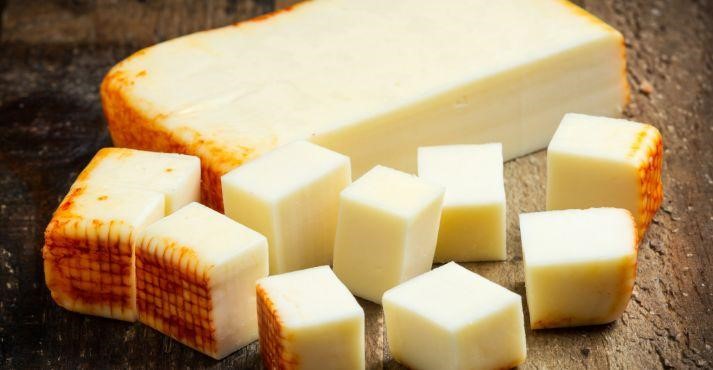
Muenster cheese is a semi-soft cheese with a mild, buttery flavor and an orange rind. While it originates from France, it has gained popularity in the United States, where it’s produced with a distinctly American twist.
The orange rind is often achieved using annatto, a natural coloring that gives Muenster its recognizable appearance.
Muenster is highly versatile in cooking, with its semi-soft texture making it ideal for melting. It’s frequently used in sandwiches and burgers, providing a creamy and smooth consistency when heated.
Muenster’s mild flavor also makes it a popular choice for casseroles, where it adds a rich buttery note without overpowering other ingredients. Its melting properties and gentle flavor have made Muenster a favorite in American cuisine.
14. Fontina
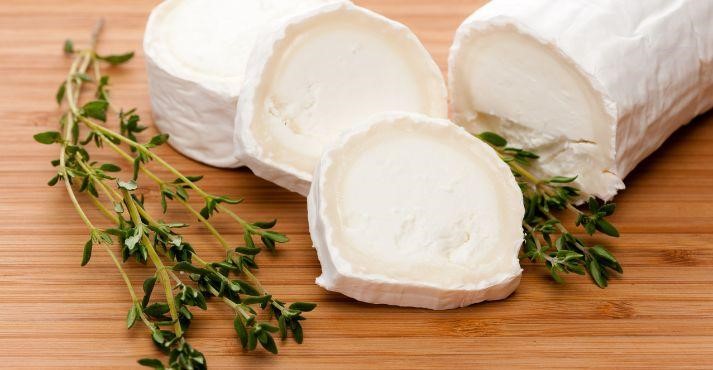
Fontina is an Italian cheese with a semi-soft texture and a rich, nutty flavor. It originates from the Aosta Valley in northern Italy. Fontina is traditionally made from cow’s milk and is known for its creamy consistency and buttery taste. As it ages, it develops a more robust flavor and slightly firmer texture.
Fontina is highly flexible in cooking, making it a popular choice for pasta dishes, fondues, and grilled sandwiches. Its excellent melting properties make it ideal for creating creamy sauces and cheese dips.
The semi-soft texture allows it to be easily sliced in omelets and quesadillas. Fontina’s rich flavor adds depth to dishes, and it is a favorite in Italian cuisine for its unique taste and smooth texture.
15. Goat Cheese

Goat cheese is a tangy and creamy cheese made from goat’s milk, offering a distinct flavor profile that sets it apart from cow’s milk cheeses.
Its texture can range from soft and spreadable to firm and crumbly, depending on age. Goat cheese is a popular choice among lactose-intolerant individuals due to its lower lactose content than other cheeses.
This Cheese is widely used in salads, where its tangy flavor complements fresh greens and vinaigrettes. It’s also a common topping for pizzas, adding a unique twist to traditional recipes.
Goat cheese’s creamy texture makes it an excellent spread for crackers or bread. It is often included in cheese boards and appetizers. Its popularity stems from its varied uses and distinctive taste, making it a favorite among cheese enthusiasts.
16. Jarlsberg
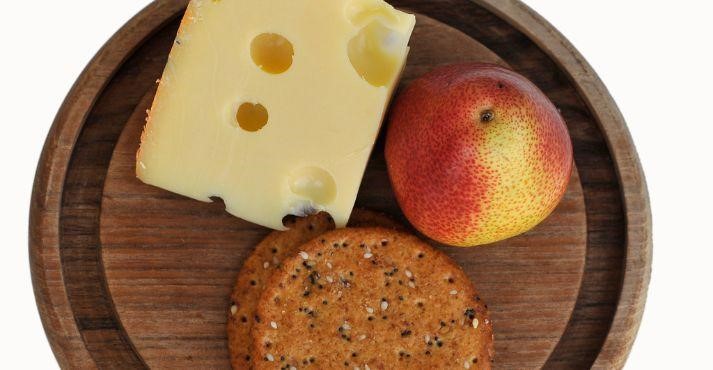
Jarlsberg is a Norwegian cheese known for its mild, nutty flavor and large, round holes. It has a semi-soft texture and is often compared to Emmental due to its distinctive “eyes” or holes that form during cheese-making. Jarlsberg’s mildness and slight sweetness make it an option for various dishes.
This Cheese is commonly used in sandwiches, offering a smooth and creamy addition to meats and vegetables. It also melts well, making it suitable for omelets, quesadillas, and grilled cheese sandwiches.
Jarlsberg’s appealing flavor and eye-catching appearance make it a popular choice for cheese boards and table settings. Its multi-use nature and mild flavor have contributed to its enduring popularity in Norway and beyond.
17. Edam
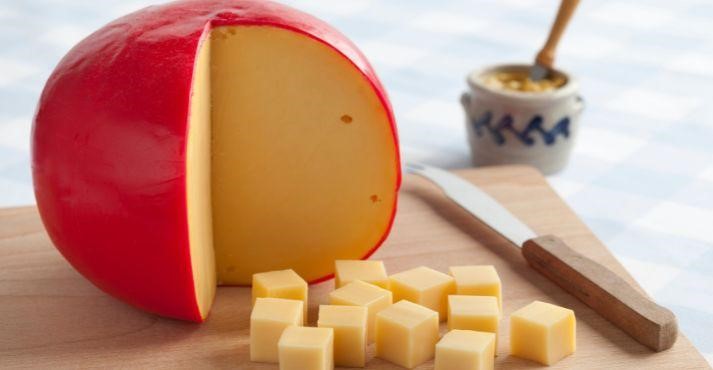
Edam is a Dutch cheese known for its distinctive red wax coating and mild, nutty flavor. Originating from Edam in the Netherlands, this Cheese is traditionally made from cow’s milk and has a semi-hard texture that becomes firmer as it ages. The iconic wax coating helps preserve its freshness and makes it easily recognizable.
Edam is commonly used in cheese boards. Its mild flavor pairs well with fruits and nuts. Its semi-hard texture makes it suitable for slicing into sandwiches or cubing for salads.
The mildness of Edam makes it a versatile addition to various dishes, and it melts well, allowing it to be used in casseroles and other baked recipes. Its pleasant flavor and unique appearance make it a favorite in many households.
Semi-Hard & Hard Cheeses (aged longer, firmer, lower moisture)
18. Cheddar Cheese
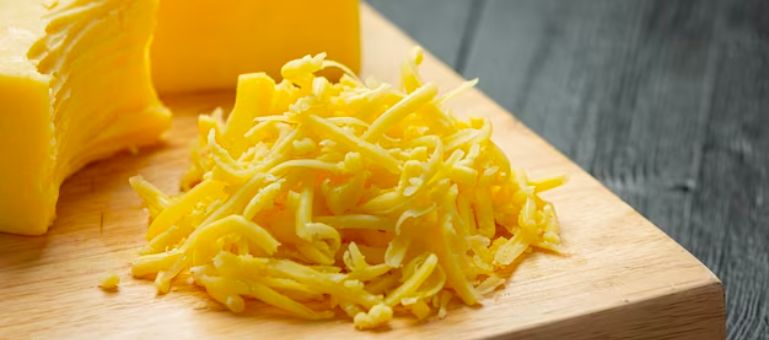
If you can offer people a cheese you know they will not refuse, it is cheddar cheese. With its origins dating back to the 12th century in Somerset, England, this cheese has gained worldwide popularity.
Cheddar cheese is a mild cheese that is crafted from cow’s milk. The milk is curdled, and the whey is removed for the cheddaring process. This process reduces the moisture content of the cheese and allows the acidity of the cheese to come through.
Like all other cheeses, the texture of the cheese depends on the aging process. Aging also allows the flavors of the cheese to be enhanced.
Young cheddar under six months has a smooth and creamy texture with a mild buttery flavor. If the cheese is aged for longer, it builds a complex nutty flavor profile.
Cheddar can be used for multiple culinary options due to its melting properties. When young cheddar is melted, the fat breaks down and leaves a smooth finish. This makes it ideal for cheese sandwiches, gourmet burgers, and macaroni.
The matured cheddar texture is semi-firm and crumbly, making it easy to slice. It is one of the most used cheeses for salads and snacks, such as charcuterie boards. If you love experimenting with new combinations of flavors, experts recommend pairing cheddar with red and white wine or topping it on apple pies.
19. Gouda Cheese

If you were wondering about the oldest cheese to date, Gouda is the one. This Dutch cheese is made from cow’s milk and has a distinct pale yellow color with a waxy rind. Gouda is typically healthy for its high vitamin K content.
The aging process can take anywhere between a few weeks to years, and you may choose it depending on the depth of flavor you enjoy.
Young gouda is soft and creamy and can be served on the table. If gouda is aged for extended periods, it acquires salt crystals, making it crunchy and crumbly. This makes it ideal for grating it or cutting it into slices.
Given the variations in the flavor profile, it is a widely consumed cheese. Young gouda offers a milder taste and resembles that of butter. Crystalized gouda is more pronounced and nutty with a hint of caramelization and butterscotch.
Gouda is another cheese that is served with crackers on the charcuterie board. You can enjoy melted gouda over a warm bowl of macaroni and pasta.
You might be surprised to hear this, but desserts often use gouda. Adding it to cheesecakes and fruit pies balances the sweetness and the nuttiness.
20. Asiago
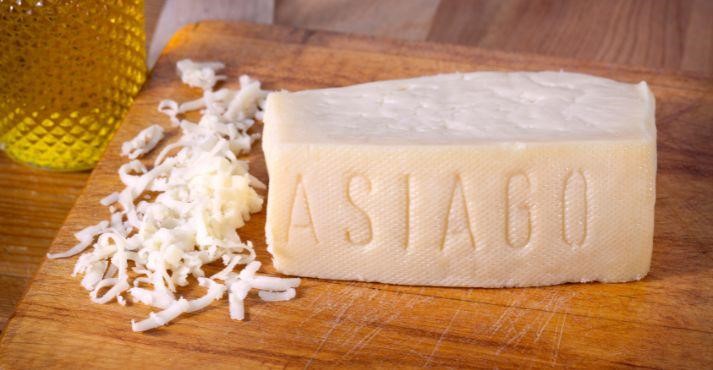
Asiago cheese is a cow’s milk cheese from the Veneto region of Italy with a long history in Italian cuisine. It is produced in two main varieties: Asiago Pressato and Asiago d’Allevo.
Asiago Pressato is a fresh, semi-soft cheese with a creamy texture and a sweet flavor. At the same time, Asiago d’Allevo is aged, resulting in a more complex, crumbly texture and a sharper taste.
Asiago’s unique flavor profile makes it a handy addition to various dishes. It can be grated over pasta, pizza, or risotto or enjoyed as a table cheese with fruits and crackers. The aged version is also popular on cheese platters, providing a robust contrast to milder cheeses.
Asiago’s adaptability and range of flavors make it a favorite in traditional and modern Italian recipes.
21. Swiss Cheese

The next cheese in line is an American take on the Swiss Emmentler and Baby Swiss. It is commonly known as a cheese with a distinct appearance.
Swiss cheese making is based on Wisconsin milk from cows feeding on grass. The brine mixture has low acidity, which allows bacteria to ferment carbon dioxide.
When the cheese releases water, the gas bubbles remain trapped. These air pockets during aging give it characteristic holes or eyes on the inside.
Despite the holes, the Swiss cheese has a smooth texture and maintains a silky finish upon melting.
The reduced acidity contributes to its sweet and nutty taste, making it perfect for pairing with pretzels, fruits, and salted nuts. The American Swiss cheese has a milder flavor than the Challerhocker or Raclette.
The Swiss cheese is made so that no rind forms on the cheese. When melted, it maintains its eye appearance and allows the chefs to use it for plating experiences.
While the Swiss enjoy this cheese in casseroles and fondue, its mild flavor allows it to be plated with different types of cheese without overwhelming them.
22. Gruyere
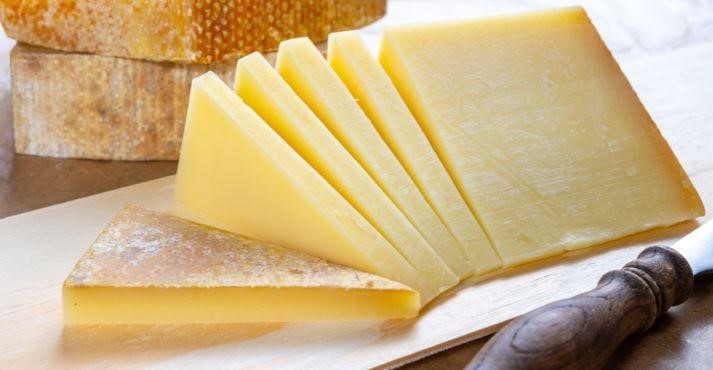
Gruyere cheese is a Swiss cheese with a firm texture and a complex flavor, ranging from nutty to fruity. Named after the town of Gruyere in Switzerland, this Cheese is made from cow’s milk and is typically aged for several months to develop its unique flavor profile.
Gruyere becomes more intense with a more profound and complex taste as it matures.
Gruyere is a crucial ingredient in traditional Swiss fondue, where its excellent melting properties make it perfect for dipping bread and vegetables. It is also commonly used in quiches, gratins, and French onion soup, adding a rich and savory note.
Gruyere’s complex flavor and firm texture make it a favorite in many European cuisines, and its adaptability in cooking has made it a staple in kitchens worldwide.
23. Parmesan Cheese
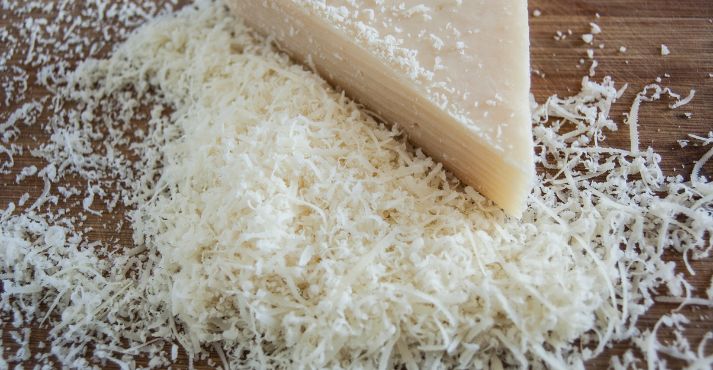
Parmesan cheese is a hard, aged cheese known for its rich, nutty flavor and granular texture. This cheese is often referred to as the “King of Cheeses” due to its exceptional quality and versatile uses.
Parmesan cheese comes in two primary varieties: Parmigiano-Reggiano and Parmesan. Parmigiano-Reggiano is the authentic Italian version, meticulously crafted in specific regions of Italy, following centuries-old traditions. It is aged for a minimum of 12 months, with some varieties aged for up to 36 months, resulting in a sharp and complex flavor.
This cheese is a culinary staple in many countries, gracing pasta dishes, risottos, and salads with its savory presence. It’s grated over spaghetti, sprinkled on Caesar salads, and used to elevate the flavors of soups and stews. Parmesan cheese is also a key player in the world of appetizers, accompanying fruits, nuts, and charcuterie on cheese platters.
Beyond its use in savory dishes, Parmesan cheese surprisingly enhances the flavor of sweet treats. Shavings of Parmesan on fresh strawberries create an exquisite dessert, balancing the sweet and savory notes for a unique culinary experience.
24. Halloumi
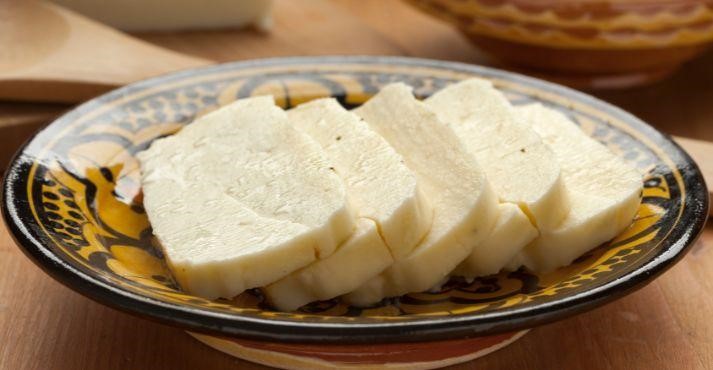
Halloumi is a Cypriot cheese with a high melting point, making it suitable for grilling or frying without losing shape.
Traditionally made from a combination of goat, sheep, or cow’s milk, halloumi has a firm texture and a salty flavor. Its unique characteristics make it famous for salads, sandwiches, and mezze platters.
Halloumi’s high melting point allows it to be grilled or fried to a golden brown without becoming overly soft, creating a crispy exterior and a chewy interior. This Cheese is often served in slices on top of salads or sandwiches, adding a satisfying texture and savory taste.
In Cypriot and Middle Eastern cuisines, halloumi is a staple in mezze platters, providing a delightful balance between salty and creamy flavors.
25. American Cheese
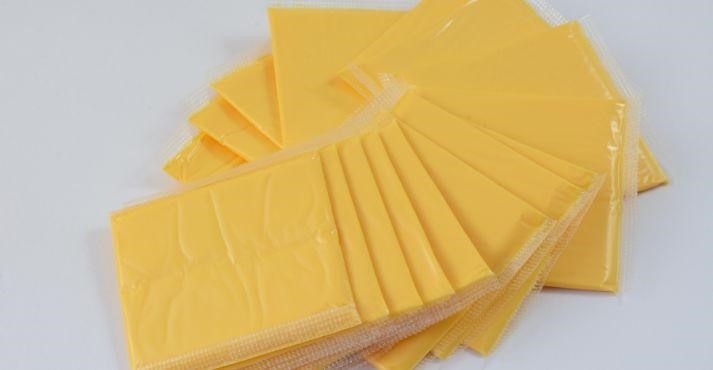
With its roots in the United States, American Cheese is a processed cheese made from a blend of natural cheeses, often cheddar and Colby. It’s known for its creamy texture, mild flavor, and smooth consistency, achieved by adding emulsifiers and milk byproducts to the cheese mixture.
This unique process allows American Cheese to melt evenly, making it ideal for creating a classic cheese pull in grilled cheese sandwiches, burgers, and cheese-topped casseroles. Its versatility in various dishes, from fast food to creamy cheese sauces and baked dishes, is a testament to its adaptability and culinary appeal.
American cheese’s popularity in American cuisine is undeniable. Its distinctive orange slices feature prominently in many traditional dishes. American Cheese is often used in fast food and is a staple at barbecues and diners nationwide.
Its uses extend to various culinary applications, from creamy cheese sauces to baked dishes, reinforcing its status as a quintessential American ingredient.
Blue Cheeses (veined with mold cultures for bold flavor)
26. Blue Cheese

The blue cheese is so-called because of the blue or blue-green veins on the interior. The family of bleu cheeses has this appearance from edible mold spores of Penicillium roqueforti. It is made from fresh goat or ewe’s milk, depending on the type of blue cheese.
The making of blue cheese belongs to the caves of Southern France, which allowed a diverse texture and flavor profile.
Now, blue cheeses are matured in air tunnels for up to six months. The textures range from firm and crumbly for young cheese to creamy for matured cheese.
Blue cheese is ranked as one of the tangiest cheeses with an intense flavor. You may have to develop a liking for this flavor profile.
However, you can enjoy it best by melting it on ribe-eye steaks and gourmet burgers. Experts recommend balancing the saltiness with something sweet, often made into dips and drizzled with honey on salads.
Bleu cheese comes in different types, such as Gorgonzola from Italy and Roquefort from France, with aromas and flavors of its own.
Brined or Crumbly Cheeses (salty, preserved in brine)
27. Feta Cheese
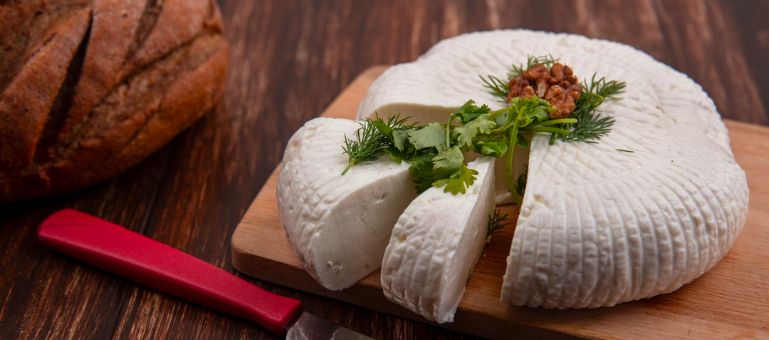
If you want to add a Greek touch to your dishes, Feta cheese is exactly what you should add. It should be kept in mind that cheese produced in areas of Macedonia and Central Mainland Greece is authorized to be sold as feta.
Authentic feta comes from 30% goat’s milk and 100% sheep’s milk. The last step in the process is submerging it in brine for several weeks, making its taste more pronounced. You will see feta being sold in plastic containers filled with brine to prevent it from drying out.
Similar to other white cheeses, feta does not melt quickly. To truly enjoy the Mediterranean charm of feta cheese, crumble the cheese and top it on your favorite bowl of salad to add tanginess and a zest of brine. Serve it with fresh cucumbers and tomatoes.
Feta offers culinary versatility, and it has been a staple in cooking. Feta cheese is cooked into soups to give it a rich, creamy texture, or it can be baked with pasta and risotto.
28. Cotija
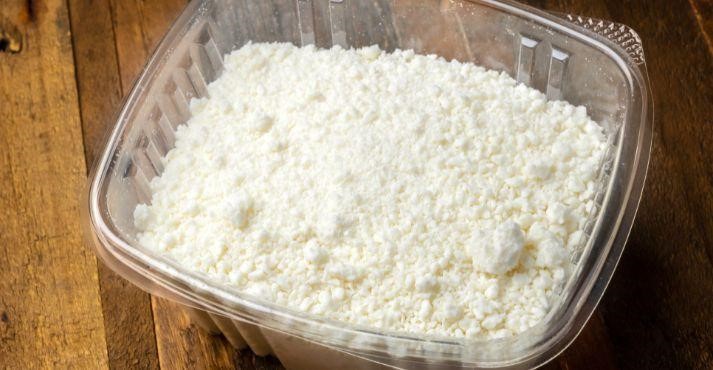
Cotija cheese is a Mexican cheese known for its crumbly texture and salty flavor. It originates from Cotija in Michoacán, Mexico, and is made from cow’s milk.
Cotija’s distinctive characteristics make it a popular choice for topping tacos, salads, and soups, where its salty notes add a burst of flavor.
This Cheese is often compared to feta due to its crumbly texture and pungent taste, but Cotija tends to be saltier and does not melt, which makes it ideal for grating or crumbling.
Cotija improves dishes like elote (Mexican street corn), enchiladas, and refried beans in traditional Mexican cuisine. Its role in these classic recipes and intense flavor have earned it a special place in Mexican culinary culture.
29. Bandel Cheese
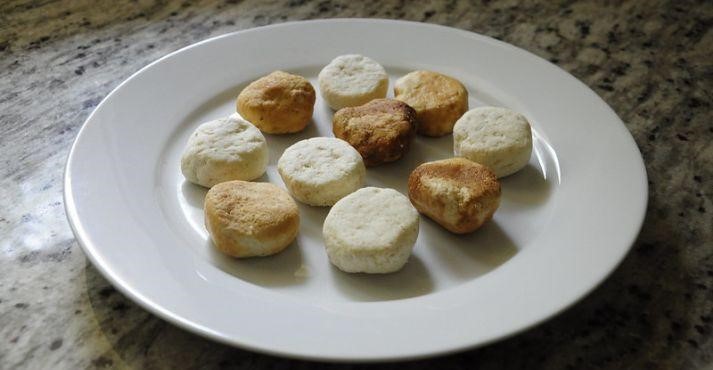
Bandel Cheese is an Indian cheese originating from the Bandel region of West Bengal. It’s traditionally made from cow or buffalo milk and is known for its chewy texture and spicy aroma.
The Cheese has a distinctively smoky flavor derived from its unique production process, which involves curdling milk and then smoking the Cheese to preserve it. This method also contributes to its firm texture and spicy taste, making it a cheese worth exploring for its unique characteristics.
Bandel Cheese is often used in Indian cuisine, adding a robust flavor to various dishes. It can be crumbled over salads or used in savory recipes with smoky notes that complement other ingredients.
Despite its strong aroma, Bandel Cheese has a dedicated following among cheese enthusiasts who appreciate its unique characteristics and versatility in cooking.
Regional/Traditional Cheeses (Categorized by Origin)
30. Chhurpi (Himalayan, hard/dried variety)

Chhurpi is a traditional Himalayan cheese made from yak or cow milk. It is known for its complex and chewy texture. This unique cheese is a staple in Himalayan communities and is significant culturally and dietary important.
Chhurpi is made by curdling milk, draining the whey, and drying the curds. This process results in a dense and firm cheese that can last long without refrigeration.
In Himalayan cuisine, chhurpi is often consumed as a snack, providing a high-protein, low-fat source of nutrition. It is also used in soups and stews, where its chewy texture adds depth and character to the dish.
In some regions, chhurpi is chewed like gum, serving as a traditional method of combating cold weather and providing sustenance during long journeys.
Its cultural significance and unique properties make chhurpi not just a cheese but a symbol of resilience and adaptability in Himalayan communities, deserving of our respect and appreciation.
Conclusion
Did you see how types of cheese made from simple milk can completely transform cuisines?
Each cheese brings its unique character to the table with a flavorful profile open to culinary creativity.
This blog explores the buttery finish of Brie, the tanginess of feta, and the stretch of mozzarella cheese. The world of cheese is open to interpretations.
If you are a home cook who appreciates fresh cheese or a cheese connoisseur, we encourage you to play with the different textures of cheeses. Know when the cheese has ripened and aged, and enjoy it in its premium form.
Every block of cheese is a delight on its own. We hope you can pick the right type to melt on your burgers and pizzas!





























